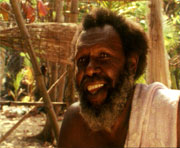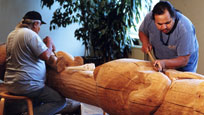This past summer of 2010 marked the 20th anniversary of the Oka Crisis.
Through video, media archives and print material we continue today to learn from this event and the stories that people share about it. This crisis received extensive media attention across Canada and around the world. I recommend the movie Kanehsatake: 270 Years of Resistance (The Oka Crisis) (National Film Board, 1993) which can be viewed at
http://video.google.com/videoplay?docid=8939345967488327634#
It is an excellent recounting of the events, also giving the historical context. It is a feature-length, multi-award winning documentary by Native American filmmaker Alanis Obomsawin. It is set in the thick of the armed confrontation between Native American Mohawks and Canadian government forces during the 1990 two-and-a-half month standoff in the Mohawk village of Kanehsatake near the village of Oka in Quebec. There was one fatality in the crisis, Corporal Lemay.
For CBC archival information see: http://archives.cbc.ca/politics/civil_unrest/topics/99/
Twenty years after the death of Corporal Lemay, his sister Francine came forward with the story of her journey of learning, healing and reconciliation and with the publication of her French translation of the book At The Woods Edge: An Anthology of the History of the People of Kanehsatake. Francine Lemay initiated this translation project recognizing that even 20 years after the Oka event, the Francophone community around her lacked information and understanding of the Mohawk people’s history and culture.
See:
http://www.goodminds.com/booksatom/At-The-Woods-Edge-An-Anthology-of-the-History-of-.html
http://www.francinelemay.com/my-story.html
http://www.cbc.ca/canada/story/2010/07/07/f-francine-lemay-oka-reconciliation.html






